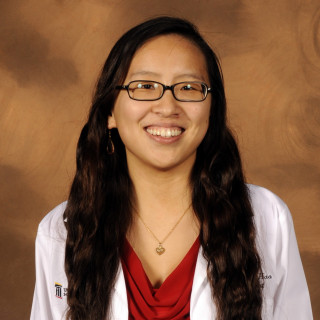
Patients with chronic liver disease are like small boats drifting on the ocean. So long as nothing unexpected happens, they continue to drift forward peaceably. But when this careful balance is upset, they have very little reserve to keep them floating.
Such was my patient in the trauma ICU. Using everything we had at our disposal, the trauma team supported him through the insult dealt to his body by the motor vehicle collision. He had been extubated, had awakened, and seemed to be on the fast track to getting out of the ICU.
Then everything began proceeding in reverse. The next day, his Glasgow Coma Scale score declined. The following day, his blood pressure dropped, prompting vasopressor infusion. The day after, he needed to be re-intubated. We were scrambling by then to keep up with his physiology and work up every possible reason for his decline at the same time. He was on sedatives, antibiotics, vasopressors, electrolytes, even lactulose for presumed hepatic encephalopathy. His MELD score on admission was fourteen. His MELD was now thirty-three.
In my head, this ship was sinking fast, and I suddenly felt hopeless. I had no desire to order more medications or adjust the vent settings. I felt I was dragging my feet with every nursing request for this patient. I was drowning under the feeling that nothing I could possibly do would make a difference, and I felt guilty for feeling this way. Clearly the patient’s family members were depending on us to save his life, and I couldn’t find the motivation to try.
Finally, a test result returned. Although the Gram stain had been negative, the intraabdominal fluid was now growing bacteria_we had a source.
Too little too late, I thought, because the stress, the insult of a surgical exploration would just as likely decompensate the patient further, if not hasten his demise. So when my attending_after much careful thought and consultation with other attendings_opted for surgery, I had to ask, “Why?”
She drew me a 2x2 box. The columns were labeled “bad” and “not bad.” The rows were labeled “surgery” and “no surgery.” In three out of four combinations, she agreed he had a zero chance of survival, or 100% chance of death. But in the last combination where the patient had a “bad” something inside and we were able to remove it with “surgery,” he had a nonzero chance of surviving, however slim. Looking down at this chart, I realized that I was not alone in my thoughts.
Everyone was aware of the anticipated mortality on the horizon, but because no one can truly predict the future and there was this minute possibility of a positive outcome, we owed it to this patient to give him this chance. This was different than the other cases we had in the trauma ICU: we de-escalate care and hold end-of life goals discussions with families of brain-injured patients with zero to poor anticipated neurologic recovery. But for those patients, life was frequently not an issue_since we can sustain brain dead patients for prolonged periods of time. For this patient, life was at stake.
The family members were very understanding. They expressed that they knew his health was poor and that he had a very real chance of not surviving the day. Still, they consented to placing his life in our hands for the sliver of hope contained in that one box out of four.
Now scrubbed and gowned, standing next to the patient, surrounded by staff and gleaming instruments, I held my breath as we completed the requisite timeout. As soon as the anesthetics hit his veins, his heart rate plummeted, and my worst fears were realized. Despite bags of fluids and maximum dose vasopressors, we could not pharmacologically revive him. We withheld physical compressions, knowing it would be futile.
The clean-up process was sobering. One by one, the monitors and machines were turned off, lines disconnected, trash and linen thrown away. The various staff began filing back to their other duties. It was then that the patient’s children called. They had been unreachable for consent, and because I had previously talked with them about their father’s status on prior days, I volunteered to speak with them now. I walked through the updates this morning, the reasoning for proceeding with surgery, and of course, in no uncertain terms, the outcome of surgery.
Silence.
Then: gratitude. “Thank you for everything that you’ve done.” I didn’t know what to say. I listened as they reminisced about the kind of person he had been, I gave them all the perfunctory postmortem information, and then the call was over. For days, this event percolated in my head. We reflected as a team and even presented the case to our colleagues. In this case, hindsight is not 20/20. Even if we had sampled the intraabdominal fluid earlier and operated earlier in his course, would he have even survived that operation? No one can say.
Of all the patient deaths I have experienced, this one sticks in my mind. I had been blinded by a dark curtain of despair in the face of futility and almost stopped caring_perhaps as a defense mechanism for my own sanity. But the real savior of my sanity was the response from the family and the support from my team. Though we fought a losing battle, we still fought instead of standing by on the sidelines. Our team had cared and helped me find a way to care, and there was no blame for our actions, only gratefulness.
Reflecting on this, I am humbled to be a member of the healthcare profession and to carry my patient experiences with me as a reminder to care even when all roads seem to lead nowhere.
Scarlett Hao is a rising 2nd year resident in General Surgery at East Carolina University / Vidant Medical Center. She graduated from University of Maryland School of Medicine. No conflicts of interest to disclose.







